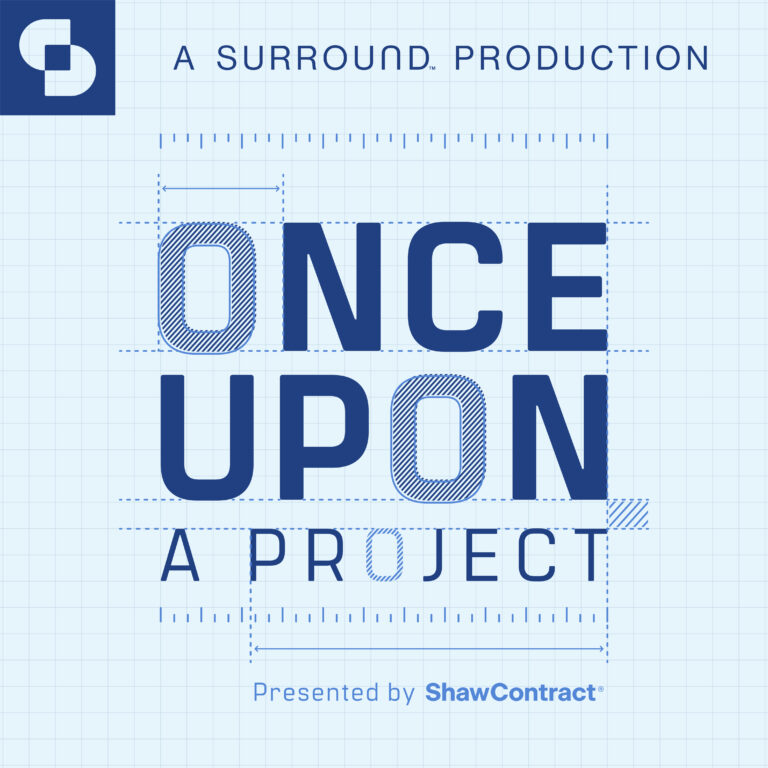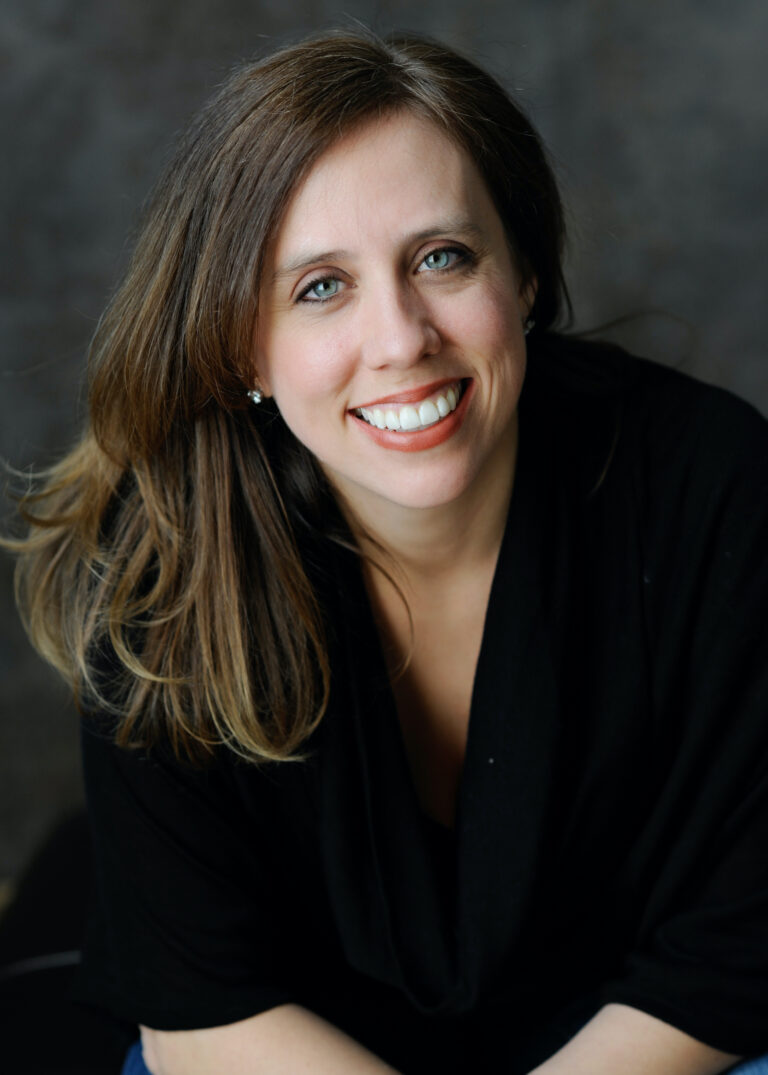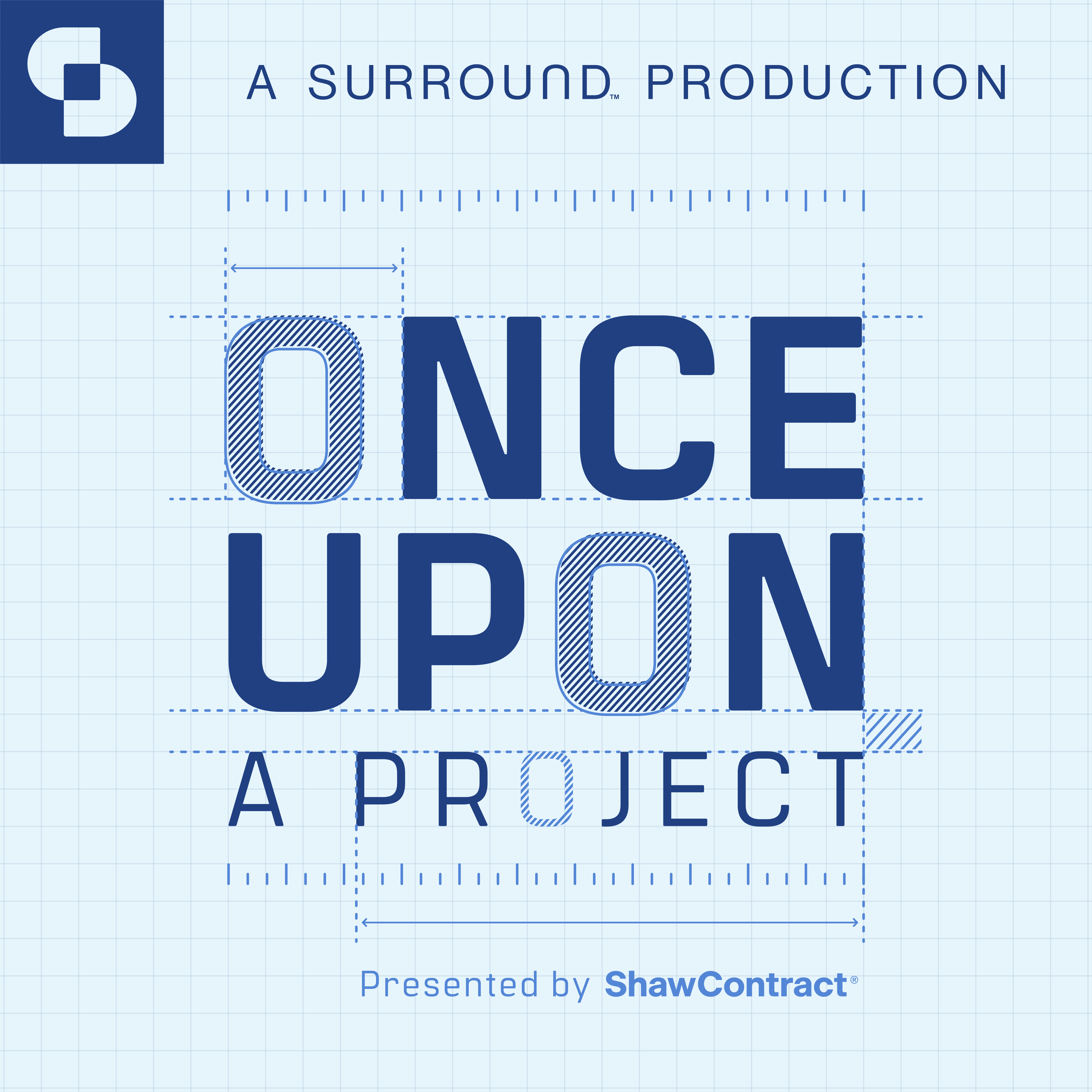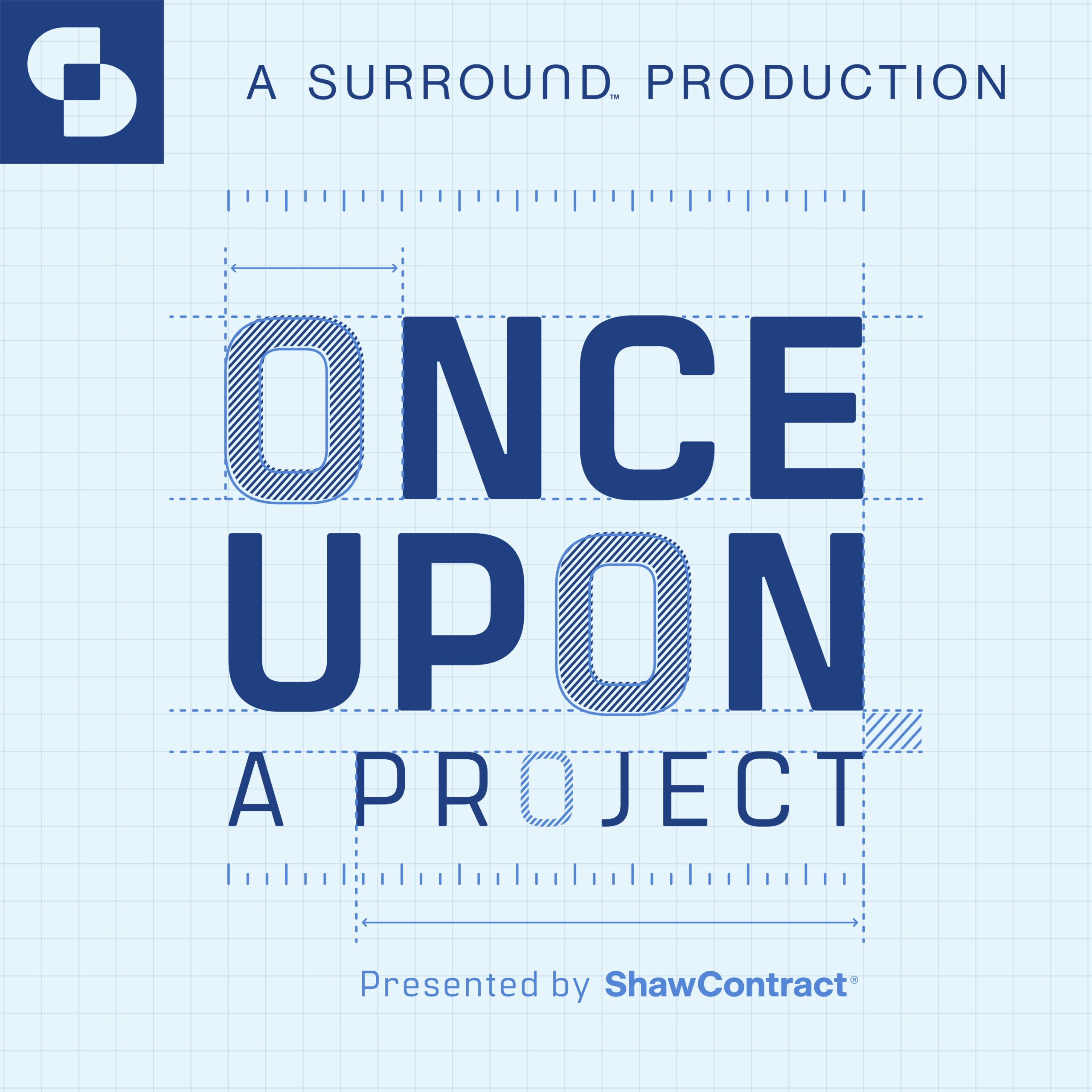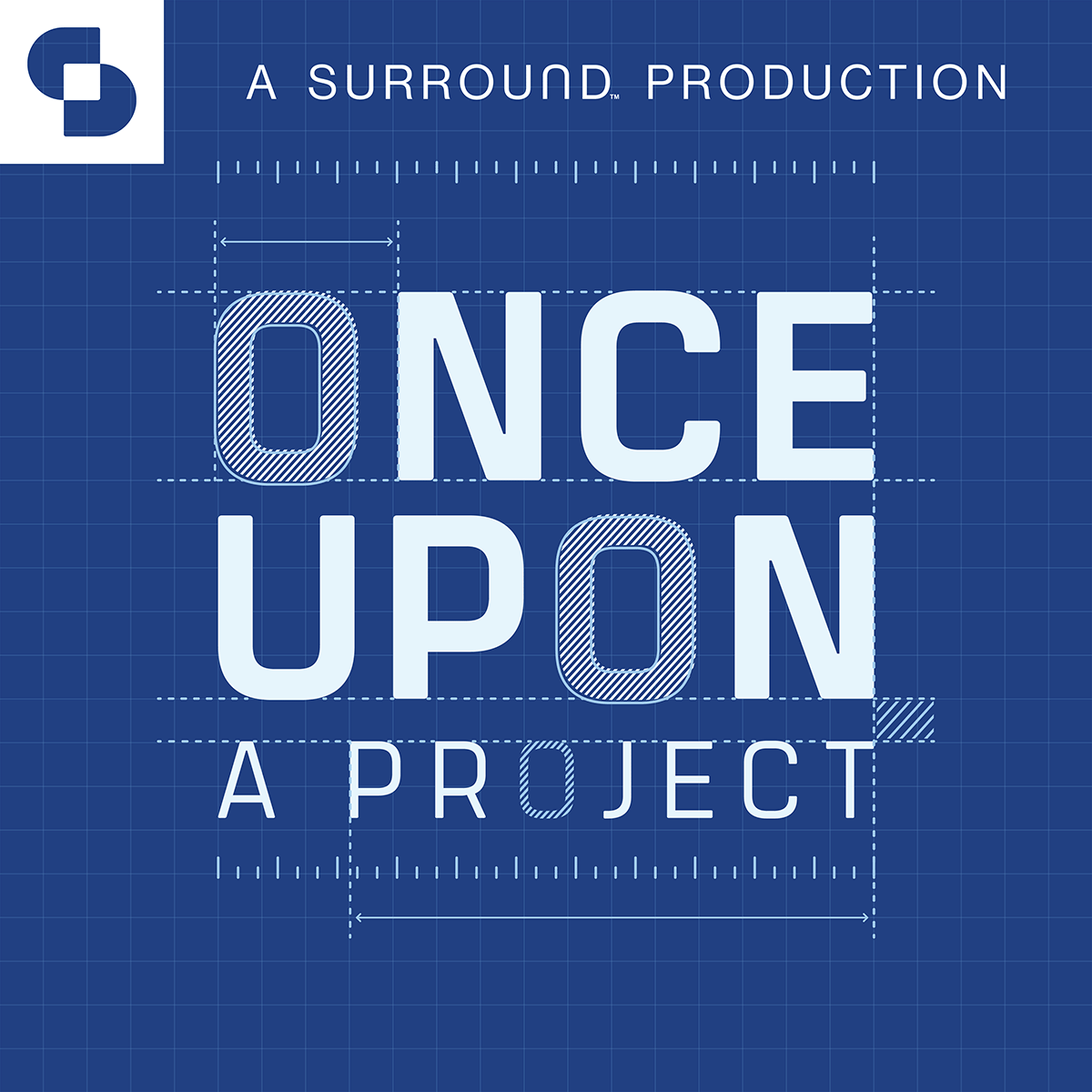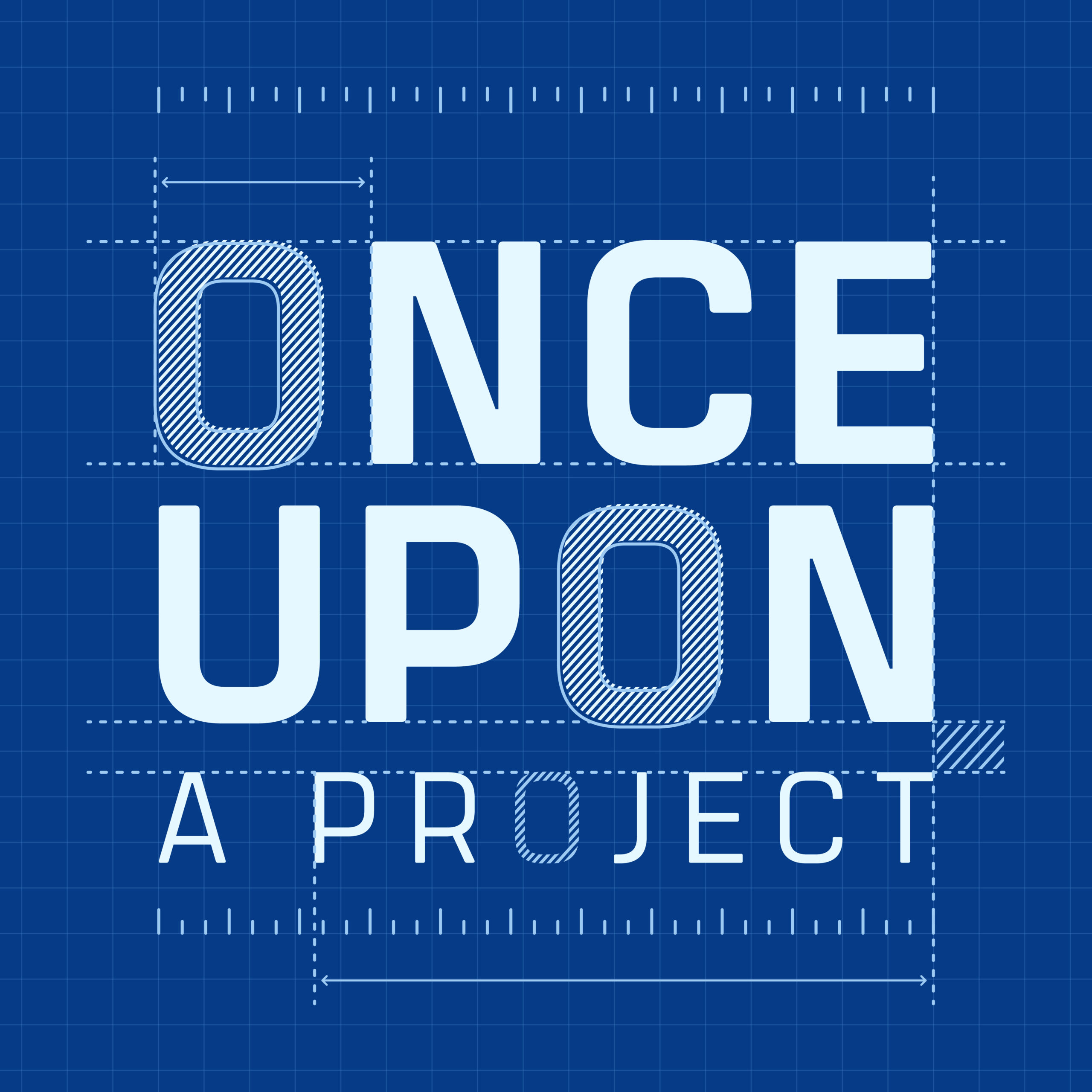While at Perkins&Will’s New York studio, Meena Krenek and the team were hungry for Columbia Property Trust’s project, The Edge, in New York City. Listen in as Krenek describes the out-of-the-box approach the Perkins and Will’s team used to win the Request for Proposal (RFP), and how their experiential approach to design provided the building’s future tenants with unique amenities and more.
This show is produced by SANDOW Design Group. Special thanks to Samantha Sager, Hannah Viti, and Wize Grazette. We also had help this episode from Emily Colitte.
Explore SANDOW Design Group Brands
AJ Paron: [00:00:00] As interior designers, we’re accustomed to celebrating the end of the project. All the final touches in place, installation is complete, and hopefully we have an ecstatic, happy client. But what about the process— the complex journey and people behind the polished and finessed final result?
Welcome to Once Upon a Project, a new show from the SURROUND Podcast Network by SANDOW. [00:00:30]
I’m your host AJ Paron, Design Futurist and Executive Vice President at SANDOW Design Group, delivering design brands you know and love, like Interior Design magazine, Metropolis magazine, ThinkLab, and more.
For today’s story, we’re going to hear about a very large workplace project that the hard work happened before the project was even awarded.
Our guest Meena Krenek has been known for being a vibrant, diverse thinking designer. As you will hear, [00:01:00] this design project was not just about bringing in more work for their studio; it was a chance to put her and her team on the map.
Meena Krenek: My name is Meena Krenek. I’m an Interior Design Director and Principal with Perkins and Will. I work out at the Los Angeles studio.
As you may know, Perkins and Will is a national and global firm, and we have done buildings all across the globe.
AJ Paron: So, at the time of this interview, this was all true. [00:01:30] However, in the life of a designer who embraces change, what is true today is not necessary [sic] true tomorrow. At the end of this show, we will reveal the new position Meena has recently accepted and what is next for her.
But first, let’s listen to the project Meena would like to take us on for our journey with her.
Meena Krenek: I would love to share with you this project exploration we had with an opportunity that came to us when I was [00:02:00] working for the Perkins and Will New York studio.
The project was called The Edge because it was on the edge of Union Square and Gramercy Park, but it’s actually 799 Broadway.
It was in 2016. I was residing in New York City, where I had gotten asked to move up to New York for the firm from a global design leader Joan Blumenfeld, who is an amazing mentor and coach [00:02:30] to me.
I was asked to come join their practice. It was a really exhilarating time in my career. When I moved up there, I became an Interior Design Director. It was a pretty big milestone.
We have a leadership institute within our organization, so I was a selected class to be graduating from that time. Our CEO had selected individuals that were part of Leadership Institute to be a part of an executive board for our company. Paul Eagle, the Managing [00:03:00] Principal, and he was the most amazing Partner I’ve ever had at the firm.
I think I was in an incredibly exhilarating part of my life and career. The coolest part was that I was working with some of the most creative people in the industry. I just loved coming into work every day, and I love the kind of inspiration I would get from our teams. I definitely was at a high in my career at that time.
I felt confident in what I knew I could build out, [00:03:30] but to be a part of something in Manhattan like The Edge, oh my gosh. Well, yeah, I wanted it. I wanted that job.
AJ Paron: Meena has been known to be a rising star in our industry. She’s been a part of the “Ones to Watch” program for the American Society of Interior Designers that honors diverse young leaders in design.
But for as long as I’ve known her, she has been incredibly humble and a constant student of design. So, you can understand why [00:04:00] this large notable project was so exciting for her.
Meena Krenek: One of the biggest conversation pieces was how can we gain an opportunity where we have building that we can look at and say, “That’s our building that was constructed and came out of all of our designers’ minds”?
To have a base building in the heart of Manhattan was an aspiration we had. We were really looking for much more of an iconic and signature building in the heart of Manhattan. [00:04:30]
At that time, we were working for Unilever and creating an amazing new corporate headquarters. We were working with a group called Normandy Real Estate Partners, and Normandy had been an incredible partner with us.
They had brought this opportunity to us for 799 Broadway, and this opportunity was quite unique. It was a building—150,000 square feet workplace building—designated for a series of [00:05:00] amenities that would support the tenants that would reside above.
And the client was very much interested in creating a workplace building that had unique offerings for the tenant. And so, one of the biggest things is how do you create a healthy sustainable work environment?
AJ Paron: Big job, right? It seemed like this opportunity had all the right ingredients to put their firm on the map in New York City. But what did the chance to build this mean [00:05:30] for Meena?
Meena Krenek: I think for me, personally, it was about working with a client that was innovative, a client that just didn’t want to do a rectangular box that was high density. A work environment. It was an organization—at the time was Normandy but turned into Columbia Property Trust—but they were thinking about things differently. So, aligning Perkins and Will in New York with a development company that wanted something different, I think that’s what got [00:06:00] me really excited about The Edge.
AJ Paron: Inside the industry, we talk about this proposal contest as the Betty Crocker Bakeoff, meaning it’s not really about what you’ve done in the past, but what you present in the moment, and anyone can win.
Doesn’t matter if you’re a design firm trying to land the project, or a manufacturer trying to get specified, it’s a grueling, intense process that of people don’t really talk about when we discuss the design [00:06:30] process.
And just how do you win?
Let’s listen to the strategy Meena and her team put together for this project they so coveted.
Meena Krenek: We said this building is going to change the lifestyle of individuals that are going to reside there, and Normandy was interested in creating a building that created a lifestyle for TAMI clients.
Say the word TAMI is with all caps, [00:07:00] T-A-M-I, and each of the letters represent different industries—technology, advertising, media, and information.
So, this client was seeking to obtain tenants that were either in the technology industry or advertising or media, and that’s what was written in the RFP and RFQ. So, we thought why not put together a magazine?
We would put together a magazine that represented the lifestyle of TAMI [00:07:30] clients.
And so, it was very thick; it was in the scale of a magazine. We called it The Edge because of the location, and we had advertising in this package. We had stories about all of the designers that would be touching this building. We did all these beautiful spreads of the kind of work that we have done. We actually had editorial stories of all the people that would be touching the project. Plus, we did a series of renderings, like a teaser, to say, “It could look [00:08:00] like this, and this is why.” It was just a really beautiful piece—a storytelling piece—that our firm still uses today to market works.
I’ll never forget when we produced that magazine package. We had these two amazing marketeers in our studio—Hannah and Anna—I’ll never forget them. They locked themselves into a room, and they had post-its and visuals and magazine spreads all over [00:08:30] the floor. They lived in this room. I felt like they didn’t change their clothes for like a week, and they always had their hair pulled up in a bun, and they were just so intensely in it to win it.
I guess that’s what I loved about this group—this pitch group—that won this project because we were all in it. Everybody brought their slice of genius to this pitch.
AJ Paron: And just like preparing for a bakeoff, [00:09:00] even when you have all the right ingredients and have prepared and practiced the recipe ad nauseam, anything can happen on the day that matters the most—the presentation interview.
Meena Krenek: Then we had the interview.
To get there that day, you could only imagine. That story was totally insane.
We get in this taxi. We have our physical model. It’s pouring down rain.
I had gone to the Drybar at 6:00AM in the morning; I had bought this perfect, A-line skirt, [00:09:30] perfect outfit to wear. Everybody knows, you know, once you got to pitch, it’s so much thinking about every little detail, right?
So, it’s raining, and we get to the building, and I feel like a wet dog because my hair is soaking wet. My colleagues are all wet, and we’ve got a model that we don’t want to get wet.
We brought our own chairs to the interview. We’ve got chairs in our hand, and the folks in the lobby of the building say, “We can’t let you go through the main lobby [00:10:00] with those chairs.”
So, then we have to go through this other, like, creepy elevator—it’s the back of house elevator—and we’re all in our refined outfits, it smells, and I got this model in our hand. The anticipation and the drive. It was like running a marathon, and everybody was in it a hundred percent, and I’ll never forget that.
So, in the interview, we thought we would stand out by saying, “Let’s give them not a traditional [00:10:30] presentation, but let’s go in there and pretend like they’re at a conference learning about this opportunity for this lifestyle.”
We scripted a whole panel discussion, so we thought, okay, we’ll bring in our own chairs—these little high-top chairs that we would sit in—like we were in a panel discussion. One of our marketeers would ask us questions.
We gave the client little VIP badge, like if you’re going to a rock concert or something, and you are VIP. [00:11:00] So, we gave them that. A bunch of swag. So, they’re sitting in front of swag, and they’ve got their little VIP badge on, and we pretended like you’re here to see a panel discussion.
And so, we created this whole environment, and I looked across the room—this was like a long conference room—and one of the executives of Columbia Property Trust, Paul Teti, he was at the end of the table, and he had his little badge on, [00:11:30] and he was just leaning in. Oh my God, we’ve got his full attention. He’s completely into what everyone’s saying.
And I have to tell you, we had scripted this panel discussion, and every time we’d do a pitch prep, we all are kind of fumbling through it. But this time when we presented, everybody was on point. It was like, awesome.
Everybody in the room was just, like, intensely paying attention to everyone. It was such an exhilarating moment. [00:12:00] We had prepped so much; we were in it to win it.
At the end of the day, if we don’t win that project, I’ll be, obviously, very sad, feeling incredibly like, “Oh, they didn’t like us.” You know, it was like a boyfriend rejecting you. I probably would have thrown away that A-line skirt.
Um, it’s emotional but, like, the energy that the team brought…
It’s the way we held ourselves. It’s the way we [00:12:30] presented with such passion and gusto. And it’s the way we walked in the room with our chairs and our energy, like, our client was leaning in to get more. They were asking questions, and they were in it, too. That level of energy that each one of the team members brought in was just so amazing. Feeling someone’s energy is just so important. [00:13:00]
If I could, like, give advice to anybody, people got to feel each other. We’re human; we’ve got to feel this, right? And I have to say, at the time, Normandy Real Estate Partners, now, Columbia Properties, they felt us. Like we wanted it. We were passionate. We brought in everything we could. We talked about the design like it was already built, like it was ours to win, like, we’re going to get to the finish line. We’re going to do this. So, a little bit of manifesting, I think, too.
[00:13:30] The best part of it is that they ended the year. I think we were informed in December, but we got the notification that we won the project.
We took a risk, and that risk paid off. We went the extra mile. We tried to immerse ourselves in TAMI clients like no other. We created a video, a model, a different experience for our presentation. All these team members that really wanted it as bad as each other; we all felt this craving [00:14:00] to win this project.
AJ Paron: They did it! And it’s always clearer on how you win a project after the fact. But this design team put together, not a proposal, but an experience for the client.
Sometimes we forget not everyone can see a vision for our project. It was a genius move for the team to create the mood, the feelings, pushing the endorphins the client would have after the project was complete.
That way they could really see [00:14:30] what they would get and the end results.
Meena Krenek: I still remember the kickoff meeting, and that gentleman—Paul Teti that I mentioned—was just beaming. I mean, he would walk into a room as a client—and he was a visionary—and as a design firm, as innovative thinkers, we all fed off of him.
We felt like the model that we showed, and the visuals we showed for The Edge, [00:15:00] it wasn’t like he wanted a lot of changes. He had fallen in love with this idea of a workplace that had a series of balconies, all of the views of the city, and a rooftop that was all about creating this building in the heart of Manhattan.
Here, in LA, we talk a lot about indoor/outdoor work environments, now more so than ever through this whole experience, but this was pre-COVID, and this was an aspiration that [00:15:30] Paul Teti had that all of the tenants that are in this building have an outdoor environment. So, there are these floating outdoor environments on each of the tenant floors that really, kind of, explore this idea of a connection back outside.
You know, sometimes, and especially in New York City, so many spaces are internally based, and I think that his aspiration to have a rooftop—something for the tenants that allowed them to have the space for respite [00:16:00], to get away—for a tenant to feel like in the hustle of New York City, this space is going to have this soothing, natural component.
And you can see online when it opened up, it’s very similar to the design that came out of the pitch concept, right? So, it hasn’t evolved that much. So, I guess, for me, the biggest thing I learned is in the very beginning, it’s almost like dating. When you find that alignment with the client [00:16:30] and they get you, and they understand your larger aspirations, and you understand theirs, that kind of marriage can allow us to build some really incredible spaces.
AJ Paron: Meena and her team are experts at experiences. When we talk about workplace and humans, it’s really about the experience people are having that will influence their productivity, wellness, job retention, and happiness. Designers have been talking about this for years, but it’s now [00:17:00] top of mind since our world changed.
Meena Krenek: This was a time pre-COVID. It’s so interesting now to talk about it because, boy, has the world of workplace changed or is changing. It’s-it’s in a position where we are all rethinking, re-imagining what work will look like in the future but, pre-COVID, people were looking to be a part of something greater than themselves.
This building was to create tenant experience. The building itself was having [00:17:30] a unique series of amenities. That kind of mindset that Paul brought to the table was something that was going to draw the best type of tenant into the space.
How do we provide things that are encouraging people to come into the work environment and make it a part of their life? Like I work in this building, and I’m proud to be a part of 799.
And I think that’s draws clients—big or small—to these environments is really, you know, a lot to do with amenities, [00:18:00] the conveniences of what’s offered in that building.
You know, incredible social space on the ground level that allows me to grab an amazing cup of coffee. A nutritionist on site. Especially thinking about how dense the city is in New York, the sculpting of the building and having those rooftop and green spaces that are on every floor, was a true differentiator.
Then, of course, community spaces that would be open to all of the tenants that are in the building, [00:18:30] where these TAMI clients can cross-pollinate with each other. Spaces, like a conferencing center and amenity center and other offerings, make this building iconic.
Building experience while we’re building and thinking about space is so important. And so, I would say I’m definitely a highly empathetic about the end-user—how they’re going to feel, all their touch points—so that we can curate these behaviors [00:19:00] to really make these spaces what the greater vision is, or the kind of behaviors we want to happen in these spaces.
Perkins and Will wanted to be a part of what Paul’s vision was, and they wanted to be a part of our vision. That’s why this pitch was so exhilarating. We’re creatives, right? In the big scheme of things, there is a certain amount of risk that we have to take when we go into this. I think we have to be fearless, a little bit, when we’re going through this process. Presenting [00:19:30] a concept to a client prior to winning the work, always a risk, but it’s also getting people excited about what we do.
I almost think it’s our duty. We’re creatives, and we’re visionaries, and we want them to realize how incredibly exciting it would be to work with us. And the visuals that we can come up with to get them excited, all of it’s so personal, like, they’re your children, right? I always have [00:20:00] these moments at the end when we’re doing photography of the space, walking the site with the client at the very end and people are in the spaces we design. It’s like, it’s emotional. It’s a roller coaster.
You’ve imagined the individuals using the space, almost like it’s been yours the whole time, but then you pass it on to the clients. It’s like the most priceless thing.
Oh my God, I’m getting emotional.
It’s the most priceless thing you can have as a designer. To stand there and see the building, it’s like, [00:20:30] it’s definitely really special, and-and Paul Teti, the Executive Vice President from Columbia Properties, he’s exhilarated and just so happy about the project, and happy to work with Perkins and Will, so I just really appreciate my partners that were in it to win it with me—Paul Eagle, who was the Managing Principal at the time; Rob Goodwin, who was the Architecture Design Director—to have partners that wanted it as bad as I did was really [00:21:00] special.
AJ Paron: An emotional rollercoaster indeed. You can hear the pride in Meena’s voice talking about her team and the experiences they built together.
When a project ends on such a high note—a true success story—it might be easy to overlook the hard work and the risk that went into it even before being awarded the project.
In a time where firms are spending a lot of billable hours designing whole projects before it’s even theirs, [00:21:30] it takes a real appetite and vision to be a firm that prevail.
It’s clear that Meena and her team won this major project by building and communicating a clear vision of not just the end result—what the project would do—but the experience and relationship the clients would have along the way.
I promised you at the beginning of this show we would share Meena’s exciting news. She has [00:22:00] recently accepted a position at HKS as a Principal Global Practice Director, Interior Design Director for Venues Interiors. In this role, Meena will be leading the interior design direction of venues at HKS to continue to evolve a leading design entity that addresses the dynamic spatial and experiential needs of individuals and organizations.
Congratulations, Meena, and we can’t wait to see what you do next.
Once Upon [00:22:30] a Project is a proud member of the SURROUND Podcast Network. Discover more shows from SURROUND at surroundpodcasts.com.
This episode of Once Upon a Project was produced and edited by SANDOW Design Group. Special thanks to the Podcast Production team—Hannah Viti, Wize Grazette, and Samantha Sager.
I’m your host AJ Paron.
Thank you for your time in listening to Once Upon a Project. I can’t wait to catch you on our next adventure [00:23:00] together.

